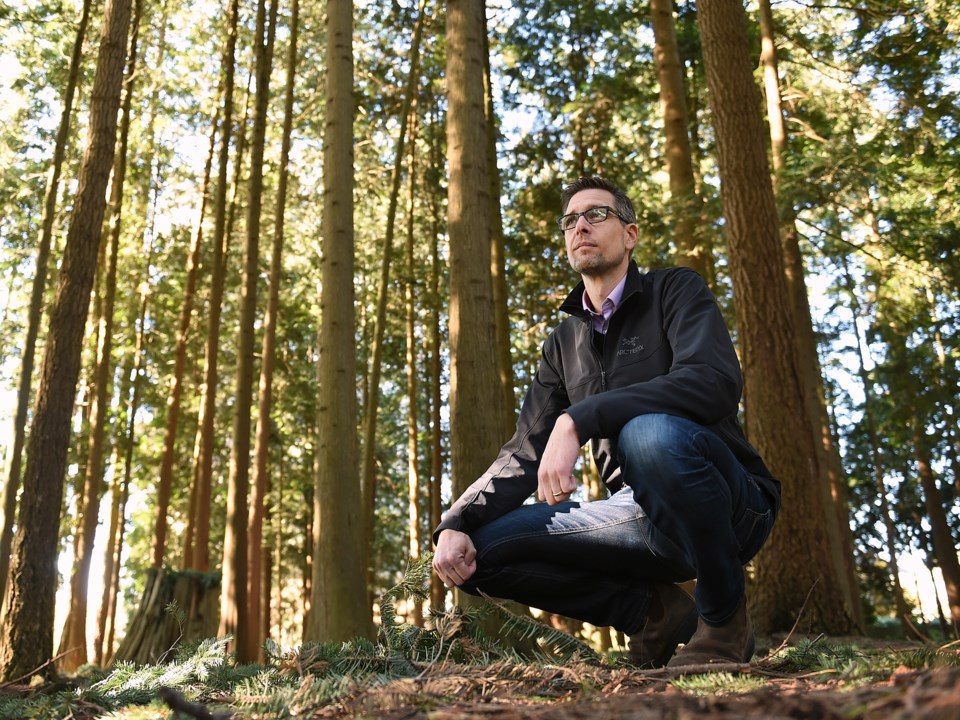They may be on the other side of the world, but weâve got a lot in common with the Aussies.
We both like contact sports, knocking back a pint and not taking ourselves too seriously.
Another common trait?
Our countries are burning at unprecedented rates not seen in previous decades.
Itâs that latter point thatâs fuelling a recently announced, four-year study that links up scientists from the Canadian Forest Service, the University of British Columbia (UBC) and the USDA Forest Service.
UBC professors Lori Daniels and Dominik Roeser are the co-principal investigators of the project, which will examine the hows and the whys behind the proliferation of wildfires in B.C., Alberta, Alaska, California and Australia, among other places.
Entitled âWildfire and Carbonâ and hosted by the University of Victoria, the projectâs goals are many: de-escalating the effects of wildfire, reimagining forestry practices, reducing carbon emissions, re-thinking the way we use excess wood and how to approach a landscape once it has burned.
âThe bottom line is that we cannot stay in the business-as-usual mode in British Columbia if weâre going to be prepared and adaptive to climate change around us,â Daniels told the Courier.
The provincial context presents some long-standing challenges unique to B.C. Weâre still grappling with millions of hectares of land that was devastated by the mountain pine beetle. Tons of dead wood lies on the forest floor across parts of central and northern B.C., and that land will never fully be remediated, according to Daniels.Ìý
More money needs to be forthcoming to cities and towns wanting to get rid of excess wood and fuel on the outskirts of those communities.
Some communities agree with the need for pre-emptive, prescribed burns to mitigate fire risk.
Others donât.
âThe 2017/2018 fires have kind of helped shift that discussion a little bit,â Roeser said. âWe see this quite often when we talk to communities, and we say to them that weâre doing this to prevent fires and reduce the fuel load.â
Either way, the discussion around prescribed burns comes with inherent trade-offs. Is a short-term burn that will emit some smoke into the atmosphere worth trying in order to mitigate larger fires that will pour exponentially more smoke into the atmosphere?
In some parts of B.C., yes. In others, not so much.
âHow do we quantify that? How do we know that with certainty and how do we put the boundaries around it?â Daniels said when asked about those trade-offs.
Standard industry practice sees excess wood from logging operations piled up and burned. That, too, needs a re-think, according to the UBC professors. Maybe it gets repurposed and used to build things such as palettes or, at the very least, itâs stored in large containers so that it doesnât catch fire.Ìý
New challenges are happening in the here and now as well. As mills shut down across B.C., Roeser and Daniels suggest those unemployed workers be mobilized in other parts of the forestry sector â specifically in the area of remediating logging sites or clearing the forest of excess fuel.
Outside of the B.C.-specific lessons to be learned, more can be gleaned from the likes of Australia and, more specifically, California. The regions are far different, as are the flora and fauna, but planning and forecasting techniques know no bounds.
âThey look to us and say, âThe interior of British Columbia looks a lot like California did in the 1970sâ and âBoy, we wish we would have done [things differently] between 1970 and 2020,ââ Daniels said.
From Australia, the lessons learned turn to what happens after a fire.
âFrom a post-fire approach, once itâs burned what do we do with it?â Roeser asked. âHow do we deal with those areas that have been burned? I think there are clear similarities with all these different jurisdictions.â
As the °ä´Ç³Ü°ù¾±±ð°ùâs interview draws to a close, Daniels and Roeser are both asked to forecast what the 2020 fire season will look like. They note the variables in play each year when peering into the crystal ball: snow pack, precipitation and temperature. Where, when and for how long high pressure systems hit is another critical indicator.
Those high pressure systems sat over Alaska last summer, burning chunks of the Yukon, Northwest Territories and the northernmost U.S. state. Southwest B.C. was left largely unscathed after the previous two summers of hellfire and brimstone.
âI would have said up until five years ago that we could often look at the snow pack and decide if it was an El Nino or La Nina year and make some projections with confidence,â Daniels said. âBut 2017 and 2018 have taken the wind out of those sails. Iâm not going to go out on a limb because Iâve been wrong the last three years.â
°ª´³´Ç³ó²Ô°³Ü°ù³Ü³¦³úÌý
Ìý



